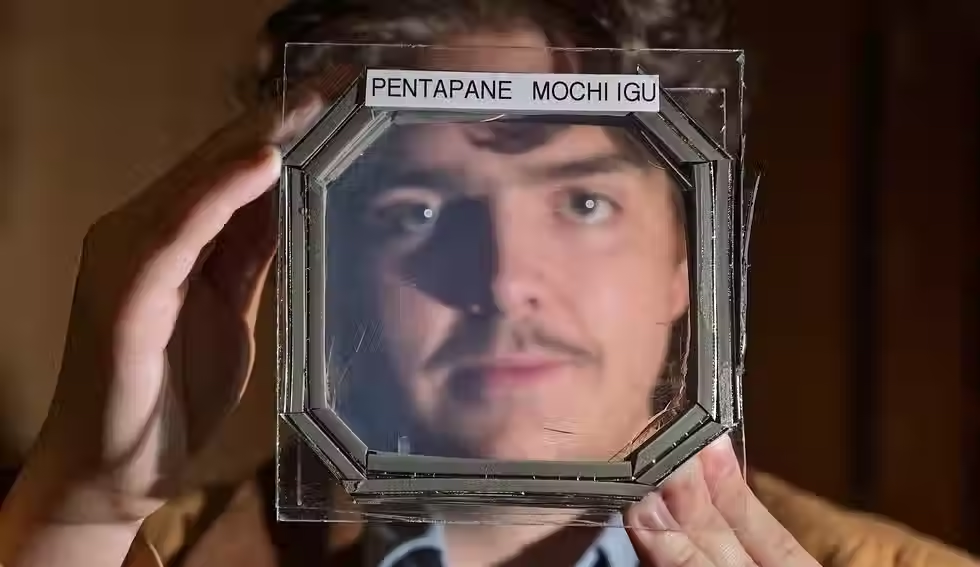UChicago researchers synthesize new family of hybrid organic-inorganic MXenes
- Marine Le Bouar

- Sep 13, 2023
- 3 min read

UChicago investigators have made progress with the synthesis of novel compounds, hybrid MXenes, that combine organic and inorganic materials, claims a new paper authored by Talapin Lab at the University of Chicago, which was recently published in Nature Chemistry.
“The material that's described in the paper provides a new platform for surface chemistry,” said Chenkun Zhou, a postdoc who served as lead investigator on the experiment. “It could be the start of a new direction for MXenes.”
First reported in 2011, MXenes are an emerging class of two-dimensional crystals that have presented intriguing properties for chemists, such as high electrical conductivity, hydrophilicity, and durable mechanical strength. These properties have made MXenes promising candidates for electrical energy storage, printable electronics, and other applications.
But as their group's publication notes, while progress has been made to understand the material's possible applications, “relatively little work has been reported on the covalent bonding of various organic groups to MXene surfaces.”
“Despite over a decade of very intense developments, there were not many chemists working in this space,” said Professor Dmitri Talapin, whose lab authored the paper. “A large number of theoretical papers suggested how great it would be to have different surface terminations on MXenes, but the community lacked proper synthetic methods in their toolset. So, it was kind of a disconnect for a number of years between all the beautiful computational predictions and experimental capabilities.”
This is where UChicago investigators found their opportunity. By using amido- and imido-bonds, the group was able to build up a family of organic-inorganic hybrid structures that exhibited the tailorable character of organic molecules and the desirable electronic connectivity of inorganic 2D materials. Moreover, these structures proved to be highly stable, a prerequisite for MXenes to become a commodity material.
“We just implemented a solid knowledge of synthetic chemistry to a completely new system and accomplished what has not been accomplished before,” said Talapin.
Moving forward by reaching out
To better understand the motives between the organic and organic materials, the investigators found interested collaborators that included investigators from the University of Illinois Chicago, Iowa State University, and Vanderbilt University. Each collaborator contributed complementary expertise that brought new insights to the field.
“We've been previously working on quantum dots, and their different relatives, and that's our main area of expertise. Pivoting in a completely new direction is not easy, but it allows us to apply knowledge and methods originally developed for quantum dots to MXenes,” said Talapin.
Despite challenges, Talapin said working outside their comfort zone brought opportunities to exchange knowledge with new intellectual communities, a relationship he called “mutually beneficial” and credited for their breakthrough.
“Hybrid MXenes may attract more chemists to explore MXenes beyond their current applications. Their contributions can unlock the full potential of this new framework, bridging both inorganic and organic domains,” said Zhou.
Next steps
While these hybrid structures may be new ground for MXene synthesis, there is still a long way to go. Talapin points out that converting their study into a platform, like metal-organic frameworks, will require years of experimental and computational work. Still, he sees unique possibilities from a few likely directions, primarily in the "designing of novel catalysts, especially catalysts for electrochemical reactions.”
“That's one avenue where we want to push as the next direction, the next step.” Reference
Hybrid organic–inorganic two-dimensional metal carbide MXenes with amido- and imido-terminated surfaces
Chenkun Zhou, Di Wang, Francisco Lagunas, Benjamin Atterberry, Ming Lei, Huicheng Hu, Zirui Zhou, Alexander S. Filatov, De-en Jiang, Aaron J. Rossini, Robert F. Klie & Dmitri V. Talapin



























Comments